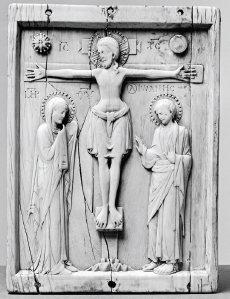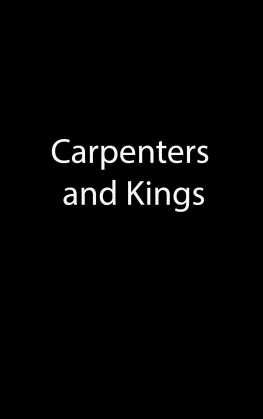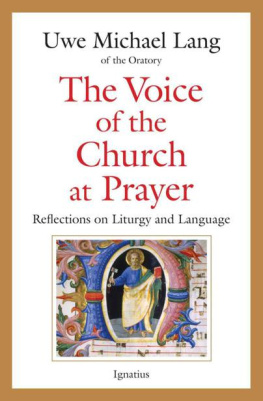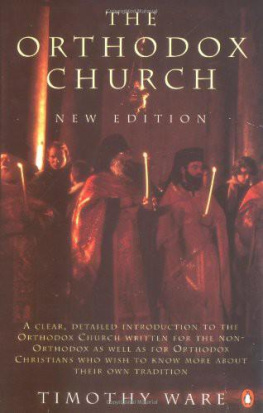This intelligent study, noting everything from aesthetics and liturgical studies to theology, is an indispensable work for those who want to incorporate icons into Western worship and devotions. Grounded in solid scholarship and gracefully written, it is a most welcome volume on a quite timely topic.
Lawrence S. Cunningham
The University of Notre Dame
Icons in the Western Church is a fascinating, helpful book for anyone who admires icons yet lacks an in-depth understanding of their background and purpose. Well-researched and clearly written, this work will help the reader sort through the theological, liturgical, and ethical issues involved in the use of icons in the Western Church. In this timely, ecumenically sensitive, and thought-provoking book, the author provides nuanced suggestions concerning the placement of icons in churches and homes of the faithful and also challenges the practice of some artists in creating new icons.
Rita Ferrone
Editor of The Yale ISM Review
Sr. Jeana Visel has done us a great service in her book. She writes with great lucidity, sensitivity, and learning about the need for the Western Church to embrace icons as part of its patrimony. After outlining the historical and theological background of the icon, she boldly and intelligently addresses the contemporary challenges facing the icons integration into the Western Church. A book for all Roman Catholic laypeople, and of great interest to Orthodox readers also, at the very least it should be mandatory reading for every Catholic seminarian, priest, and church architect.
Aidan Hart
British Iconographer and Writer
This lovely book by Sr. Jeana Visel takes the reader through a well-rounded history of iconography, and it shows how the Western iconic tradition has been wider and more nuanced than often presumed. Visel argues powerfully here that deep iconic art has the charisma to bring grace to contemporary worship, just as it did in times past, and can serve as an ecumenical rapprochement, with Catholicisms iconic tradition standing in a median role between the Orthodox and the Protestant worlds in their different understanding of icons as gateways to divine grace. The text has been produced by Liturgical Press with a deep artistic sensibility: its numerous illustrations make it a beautiful thing to possess. A little treasure. Highly recommended.
Archpriest John A. McGuckin
Nielsen Professor of Byzantine Christian History Columbia University, New York
Just as the words of Scripture have been carefully transmitted to us down through the ages, the icon likewise embodies our faith in wood and paint and shimmering gold. Jeana Visel gives us a well-grounded and insightful way to think about this traditional art form in new ways and its possible integration into Western worship. Visels approach is enriched by the personal experience of being an accomplished icon writer herself. This book is a must for all who are interested in the integration of liturgy and the arts.
Martin Erspamer, OSB
Saint Meinrad Archabbey
Cover design by Monica Bokinskie.
Excerpt from the English translation of Book of Blessings 1987, International Commission on English in the Liturgy Corporation (ICEL); excerpts from the English translation of The Roman Missal 2010, ICEL. All rights reserved.
Unless otherwise indicated, excerpts from documents of the Second Vatican Council are from Vatican Council II: The Conciliar and Postconciliar Documents, edited by Austin Flannery, OP, 1996. Used with permission of Liturgical Press, Collegeville, Minnesota.
Unless otherwise indicated, Scripture texts, prefaces, introductions, footnotes, and cross references used in this work are taken from the New American Bible, revised edition, 2010, 1991, 1986, 1970 Confraternity of Christian Doctrine, Inc., Washington, DC. All rights reserved. No part of this work may be reproduced or transmitted in any form or by any means, electronic or mechanical, including photocopying, recording, or by any information storage and retrieval system, without permission in writing from the copyright owner.
2016 by Order of Saint Benedict, Collegeville, Minnesota. All rights reserved. No part of this book may be reproduced in any form, by print, microlm, microche, mechanical recording, photocopying, translation, or by any other means, known or yet unknown, for any purpose except brief quotations in reviews, without the previous written permission of Liturgical Press, Saint Johns Abbey, PO Box 7500, Collegeville, Minnesota 56321-7500. Printed in the United States of America.
The Library of Congress has cataloged the printed edition as follows:
Library of Congress Cataloging-in-Publication Data
Names: Visel, Jeana, author.
Title: Icons in the western church : toward a more sacramental encounter / by Jeana Visel, OSB.
Description: Collegeville, Minnesota : Liturgical Press, 2016. | Includes bibliographical references and index.
Identifiers: LCCN 2015048769 (print) | LCCN 2016008536 (ebook) | ISBN 9780814646601 (pbk.) | ISBN 9780814646847
Subjects: LCSH: Christian art and symbolism. | Icons. | Catholic ChurchDoctrines.
Classification: LCC BV150 .V57 2016 (print) | LCC BV150 (ebook) | DDC 246/.53dc23
LC record available at http://lccn.loc.gov/2015048769
Contents
Acknowledgments
Writing this book has been a great joy. Special thanks to Fr. Columba Stewart, OSB, who was willing to direct the project, and to Charles Bobertz and Sr. Mary Forman, OSB, of Saint Johns University School of Theology for their encouragement. Thank you to Br. Aaron Raverty, OSB, Patrick McGowan, Lauren L. Murphy, Colleen Stiller, Hans Christoffersen, and all those who worked on this project at Liturgical Press for their assistance. I am grateful to Priscilla Fontechia, for teaching me the foundations of art; to Sarah Blick, for opening my eyes to art history; and to Stephanie Youstra, for cracking open the door to my first brush with painting icons. The most important aspects of iconography I have learned from master iconographer Ksenia Pokrovsky (d. 2013); her longtime assistant, Marek Czarnecki; and her daughter Anna Gouriev, of the Hexaemeron Six Days of Creation icon painting workshops, and words cannot express how much they have given me. Mary Lowell has been invaluable in making these opportunities possible. Jennie Gelles has provided hospitality and kindness. Marek has been helping me at almost every step of this project. I am grateful for the friendship, support, and challenge that have emerged from this community of iconographers. These people have taught me so much about how to share a faith tradition with love and respect.
I am especially grateful to my religious community, the Sisters of St. Benedict of Ferdinand, Indiana, at Monastery Immaculate Conception, especially Sr. Barbara Lynn Schmitz, Prioress, for their support of my studies and this project. Thanks also are due to friends and coworkers at Saint Meinrad Seminary and School of Theology, who continue to challenge me to share the world of icons. For my family and all those dear ones who have helped nudge this book to completion, I give thanks to God.

Carved ivory icon of the crucifixion. Walters Art Museum. | Introduction |
Despite a variegated and sometimes violent history, the icon has long held a place of honor in the Eastern tradition of Christianity. Venerated in churches, carried in procession through towns, and greeted with affection in homes, the icon in its original context speaks to the presence of God among us in the material world. The Greek word for icon, (










